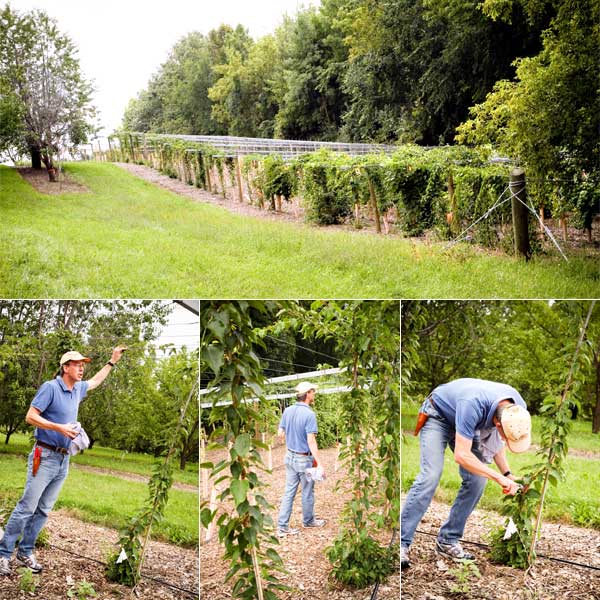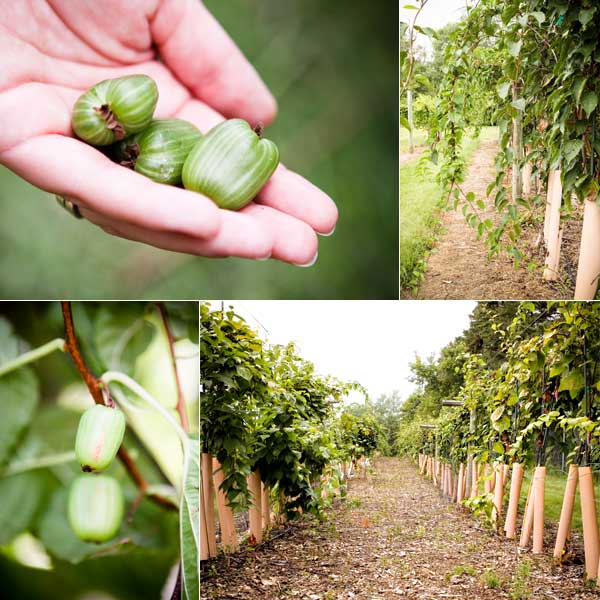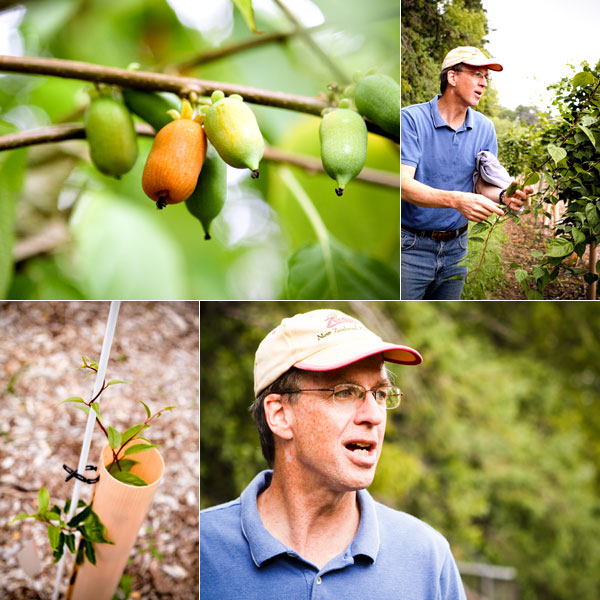
Though you wouldn’t guess it by the muggy heat, the calendar proves that summertime in Minnesota is coming to an end. This transitional period is perceived differently by different residents. It might mean one last drive up north to the cabin, the number of boat rides on your lake of choice dwindling to fewer than you can count on one hand, or even dreams of a welcome reunion with sweaters and boots. For Bob Guthrie, kiwifruit enthusiast and longtime volunteer at the University of Minnesota’s Horticultural Research Center in Victoria, it means harvest time for his cold hardy kiwifruit.

Harvest season typically spans late July to October. The steps are simple. Walk around the rows of vines, supported by trellises and wires, and keep your eyes on the ground to find the berry drop. Kiwifruits aren’t like apples or pears. Their fruit is blanketed by a thick canopy of leaves, sheltering it from invaders: birds interested in a sweet nibble, some insects, or even the chill of an early frost. Thanks to the blanket of leaves covering the fruit, they’re able to withstand one frost. However, considering this is Minnesota — and that last year’s first frost occurred Oct. 8 — it isn’t unheard of to have multiple frosts take place during one harvest season. So, Guthrie has grown accustomed to not relying on an abundance of fruit as November approaches.
Guthrie tends two small kiwi orchards at the HRC. One lies at the slanted base of a small hill, lined on one side by a thick mass of trees and on the other by other fruits being bred for research by the University. The second orchard is up the slope, covered by less shade and planted on even ground. To get to both, one travels by foot through a mass of fruit plants: grape vines, apple trees, a row of pear trees. It’s almost like you’ve stepped into Willy Wonka’s factory, but the candy has been replaced with a healthier alternative. Many of these plants have been rooted for decades. (It can take this long for fruit experts to breed plants in hopes of finding the perfect fruit for market.)

These cold hardy kiwifruits look and feel much different compared to their better known relative, the fuzz-covered Hayward varietal. Their skin is smooth and perfectly edible. (Though the Hayward skin is considered edible as well, the fuzzy, bland exterior certainly wouldn’t be appealing to your taste buds or your tongue.) They are much like grapes, bite-size and easy to pop in your mouth. Their taste is nearly identical to Hayward kiwis; however, they are pleasantly juicier and sweeter tasting. Succulent, in fact. They’re fit to be sprinkled atop ice cream, baked into a tart, fermented into wine, or just devoured plain.
For the time being, cold hardy kiwifruits are just like many of the other fruits undergoing study at this site: delicious, market-worthy, and on the brink of becoming available for purchase. Don’t be surprised if you happen upon them at your grocer in the next few years. Guthrie hopefully anticipates they’ll appear at market sometime soon. If you’re interested in seeing them before then, however, consider a stop by the Ag-Hor building at the Minnesota State Fair, where Guthrie will once again submit these kiwifruits into competition. Last year he left a winner. His kiwifruits took first place in the “any other fruit” category.


Fantastic story, thanks for doing this. Love it!